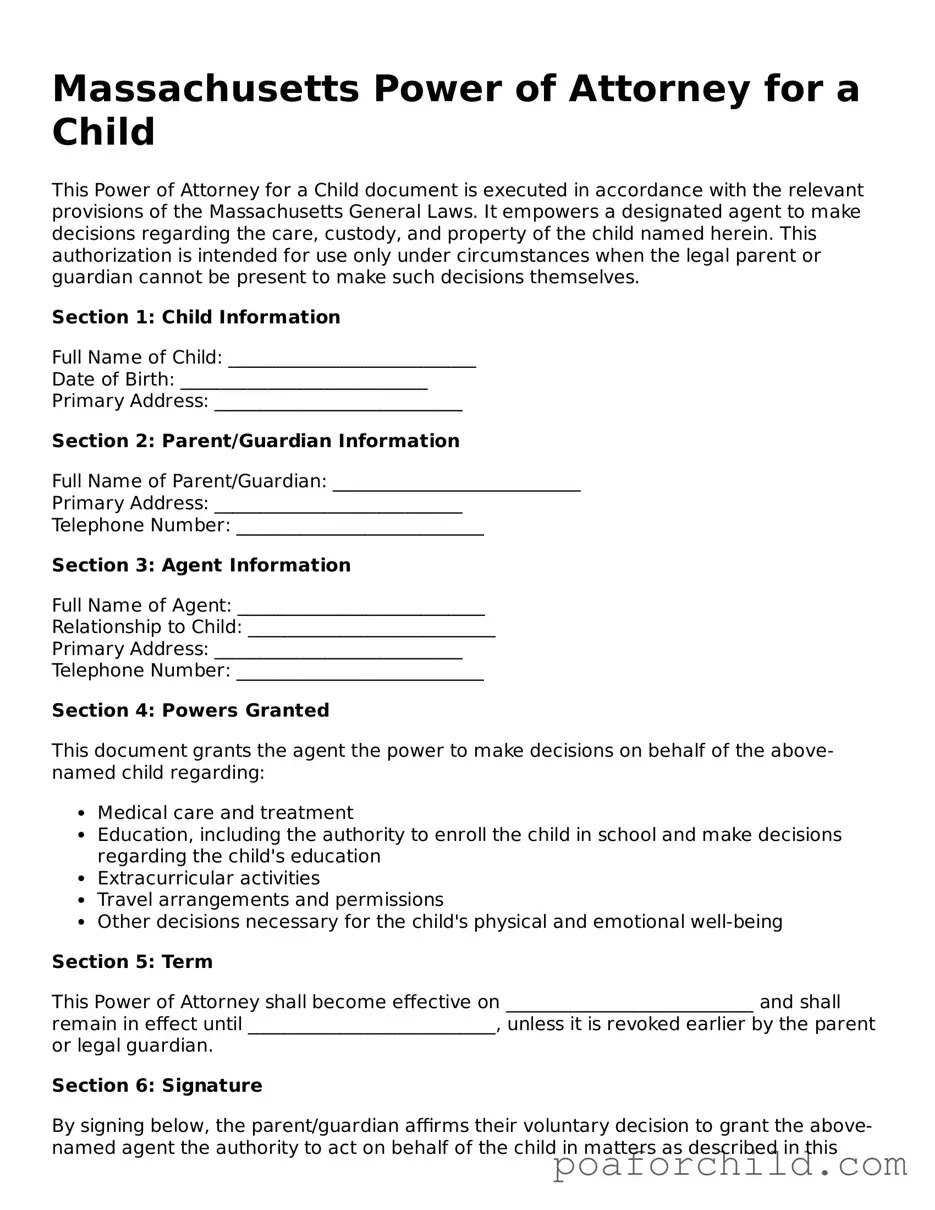Detailed Guide for Using Massachusetts Power of Attorney for a Child
Preparing a Massachusetts Power of Attorney for a Child form is a significant step for guardians who need to temporarily transfer their legal powers regarding their child's care to another trusted adult. This temporary guardianship can be crucial in various situations, such as medical emergencies or when the child's primary guardians are unable to be physically present due to travel or health reasons. Filling out this form ensures that the child will receive the necessary care and decision-making in the guardian's absence. Here is a straightforward guide to help you navigate the completion of this form accurately.
- Start by entering the date at the top of the form. This indicates when the Power of Attorney will come into effect.
- Write the full legal names of the child's current legal guardians in the designated spaces. Make sure to also include their relationship to the child (e.g., mother, father, grandparent).
- Next, fill in the child's full legal name and date of birth in the respective areas provided for this information.
- Enter the full name and contact information (address and phone number) of the person(s) who are being granted the Power of Attorney. This individual will assume temporary responsibility for the child’s well-being and care.
- Specify the duration of the Power of Attorney. This includes the start date and the end date. Note that the duration is subject to Massachusetts state laws or any stipulation you prefer within legal limits.
- Detail the powers being granted. This section is critical and should clearly outline what decisions and actions the appointed individual has the authority to make on behalf of the child, including medical treatment, schooling, and other important aspects of care.
- If there are any specific powers not granted, list them in the section provided. This helps to clarify any limitations to the authority being given.
- Have the child's current legal guardians sign and date the form in the presence of a Notary Public. The signatures legally authorize the transfer of powers.
- The Notary Public must then complete their section, certifying that the legal guardians have signed the document in their presence, and affix their official seal to legitimize the form.
Once the form is fully completed and notarized, it is crucial to distribute copies appropriately. The temporary guardian should have an original copy, and it's wise for the child's healthcare providers and educational institutions to have copies if applicable. Storing the original document in a safe, accessible place is equally important, ensuring it can be referenced or revoked as necessary. Remember, the Power of Attorney for a Child form is a legal document, and its completion should be approached with care and thoroughness to best protect the well-being and interests of the child involved.
